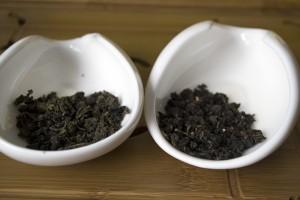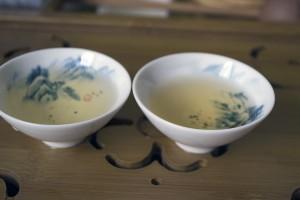If you ever had a green, black and oolong tea, you would agree that there is so much diversity in the world of tea.
More than that, within the category of “oolong’ for example, you would be stunned by how different an Oriental Beauty (东方美人)can taste from a Wenshan Baozhong (文山包种), even though both are Taiwanese Oolongs. In fact, where they are grown- Beipu and Wenshan- are only approximately 80 kilometres apart.
Going one level deeper, if you take an established variety like Tieguanyin (铁观音) for example, the range can be rather startling.
Main Styles
The main styles are ‘green style’ (清香) and the traditional styles (浓香). Though the traditional styles can be further divided, these are the 2 main segments that Tieguanyin are broken up into.
The ‘green style’ is in the Taiwanese style- lightly oxidized and lightly baked- creating an aromatic and brisk concoction.
The traditional styles are fuller and more complex, although it trades off some fragrance compared with the green styles.
The difference is so marked that those who have only had one, upon trying the other for the first time might not believe that both are Tieguanyins.
Level of Oxidation
While the ‘green style’ utilizes a very minimal level of oxidation, within the traditional style, the level of oxidation can vary rather significantly.
The level of oxidation can be varied by
i) The number of times the ‘yao qing’ 摇青 (rattling) is performed

iii) How long it sits between each ‘yao qing’
Level of Baking/Roasting
This is one of the most interesting aspects of oolong tea- the ‘firing’.
After the tea is completed, the ‘maocha’ (毛茶) can be re-baked or roasted to add an added dimension to the tea.
While many tea drinkers dabble with this, the results are often not pretty. A quick firing on a rice cooker may add a toasty aroma to the tea but it takes skill to refine the mouth feel and the texture of the tea.
Comparing 2 Tieguanyin
The one on the left is our Anxi Iron Goddess (Traditional) and the one on the right is the Imperial Iron Goddess (Heavy Fire).
Besides using raw materials of a higher grade for the latter, it was re-baked as well.
Over a lower fire, it was baked for a longer period to produce a smoother and fuller body and yet because the temperature was controlled, it is not harsh unlike some of the heavy fire versions that traditional makers produce.
The Diversity
Perhaps this is why I love oolong tea more than any other category.

While there is diversity in green tea, it more often relates to material. While production technique is important, at the zenith, there is not that much difference between the premium grades of Longjing from different producers within the same region.
Not so with oolong. Even within Xiping Village in Anxi for example, producer A’s premium Tieguanyin may vary significantly from producer B’s because of the variance in firing or oxidation levels.
Hence I could drink Tieguanyin (or Dancong or Yancha) all my life and still feel surprised by a particular version of it, in a good way.
Don’t think that if you had one Tieguanyin, you tried them all.
In fact unless you are an experienced tea drinker, odds are those you have tried are closer to the lower end of the spectrum than the higher end.
The same applies for many other Chinese teas.
See here for other articles related to varieties of oolong tea
